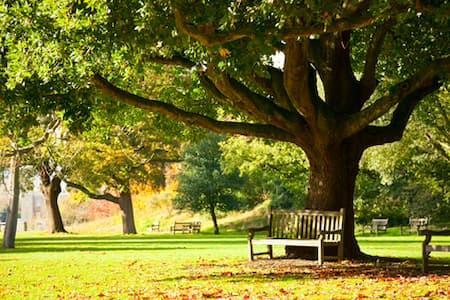9 Expert Tips to Protect and Strengthen Your Trees During Winter

When winter sets in, your trees may appear to be in a state of rest, but this is one of the best times to care for them. From preventing future damage to promoting healthy spring growth, there are key steps you can take during the colder months to keep your landscape thriving. Here's how you can make the most of winter tree care.
1. Protect Your Landscape with Winter Work
Winter’s firm ground can support equipment in areas that are tricky to access during spring and summer. This is the perfect opportunity to prune trees or perform other maintenance without disturbing your lawn, garden beds, or sensitive plantings.
2. Plan for Construction with an Arborist
If you have a building or landscaping project on the horizon, winter is the ideal time to consult an arborist. They can evaluate your site and tree health, develop a strategy for preserving vital trees, and establish root protection measures—all before construction begins. Early planning helps protect your investment and prevents long-term tree damage.
3. Invest in Lightning Protection
Mature trees are often at risk of lightning strikes, especially in storm-prone areas. Installing a lightning protection system during the winter can safeguard your most valuable trees before severe weather returns. This preventive measure can be particularly beneficial for landmark trees or those close to structures.
4. Prune Young Trees for Strength and Shape
Winter pruning allows you to shape young trees for better structure without the obstruction of foliage. Removing poorly positioned or weak branches now helps reduce the risk of future storm damage and improves stability as the tree matures.
5. Stop Pests Before They Start
Harmful insects, such as scale, often overwinter on tree bark. Applying horticultural oil during late winter can suffocate these pests before they become active in spring. This eco-friendly approach is a great way to protect your trees without using harsh chemicals later in the season.
6. Inspect Tree Canopies for Hidden Damage
Without leaves blocking your view, it's easier to assess a tree’s structure and identify hidden issues like dead branches or cracks. Winter inspections help you spot problems early, giving you time to address them before they pose a safety risk.
7. Proactively Address Health Concerns
Winter is the perfect time to review any lingering plant health issues from previous years. An arborist can help you create a proactive plan to tackle fungal infections, insect threats, and other stress-related conditions before they escalate. A head start now can prevent costly interventions later.
8. Prune to Minimize Disease Spread
Pruning in the dormant season lowers the risk of spreading diseases, which are less active in cold weather. Trees are also less vulnerable to insects at this time, giving them the chance to heal and recover before the growing season.
9. Promote Strong Spring Growth
Think of pruning as a necessary form of first aid for your trees. Like wounds on humans, cuts made during pruning need time to heal. By pruning in winter, you minimize stress on the tree and set it up for robust growth in spring. Healthy, properly pruned trees will reward you with stronger branches and a vibrant canopy.
Tree Care Done Right—Year-Round
Don’t overlook your trees during the winter! By taking these essential steps now, you’ll not only protect them from future threats but also encourage healthier, more resilient growth. Whether you need pruning, pest prevention, or a consultation for an upcoming project, our experienced arborists offer a full range of tree services to keep your landscape looking its best.
Contact Collins Tree Experts today at Missing required attribute: Missing required 'which' attribute on shortcode phone-number. to schedule your winter tree care services!